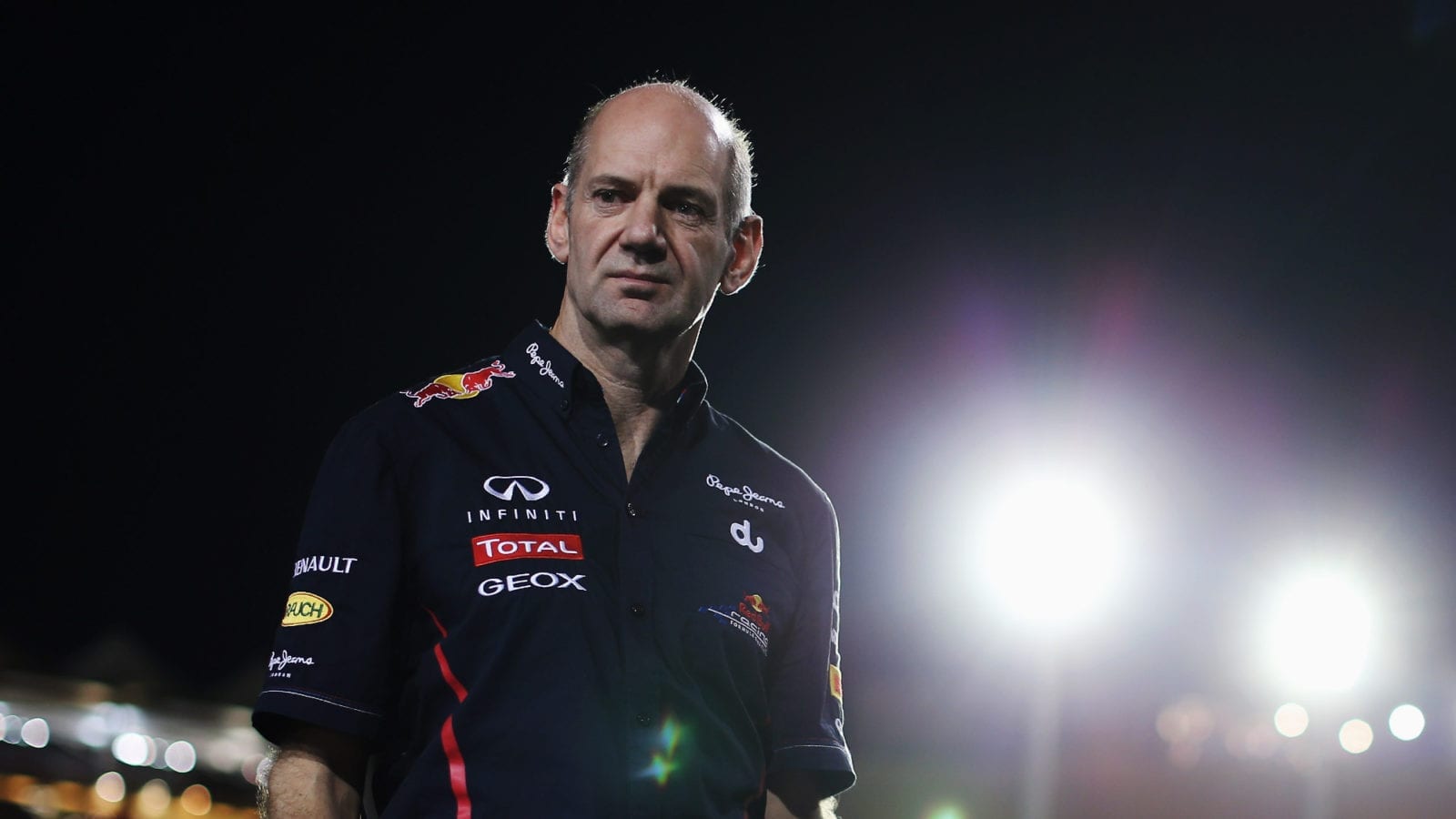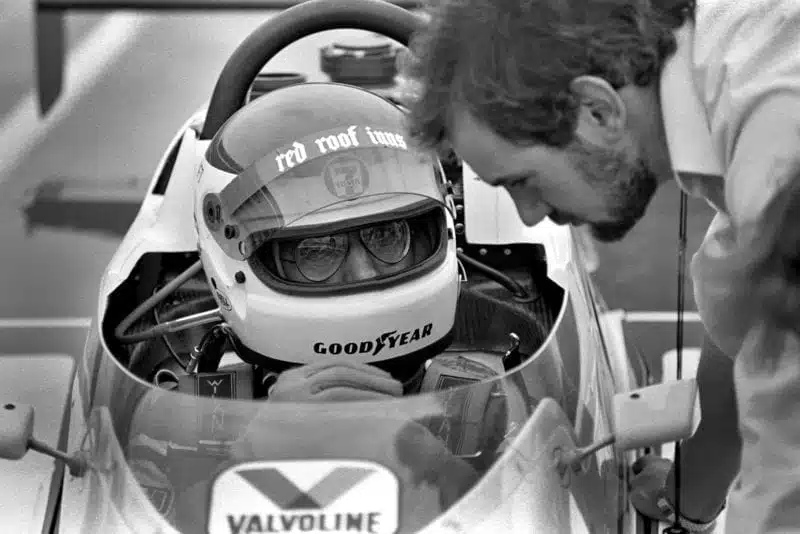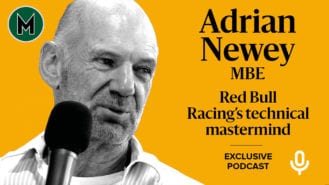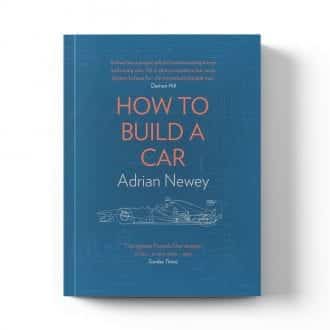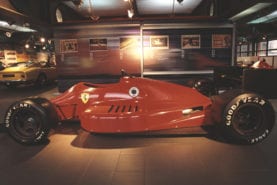Another factor was Ferrari’s politically inspired proposal for Truesports to run a Ferrari Indycar in 1986. To this end Rahal and the team tested an ’85 March at Fiorano and Ferrari offered Newey a job as their chief Indycar designer. “I turned it down because I was happy at March and I wasn’t convinced that Ferrari was the right long-term career move for me.”
Despite Newey’s departure, Rahal won the Indy 500 in ’86 and took the first of two consecutive CART championships with Grant Newbury engineering his car. In 1987 Truesports switched from March to Lola chassis for its successful title defence. Meanwhile, Newey departed March’s employ at the end of ’86 to work for Carl Haas’s new Formula 1 team. But then Haas lost his sponsor and Newey wound up working for Newman/ Haas in Indycar racing in ’87 engineering Mario Andretti’s car.
“We won the championship in ’86 and in ’87, we beat Adrian again that time with a Lola,” Rahal recalls. “He was Michael’s engineer at Kraco in ’86 and Mario’s engineer at Newman/ Haas in ’87 and we beat him both times. So maybe we proved that it wasn’t all Adrian.”
Newey warmly recalls his time in Indycars during CART’s heyday. “It was a very stimulating four years,” Adrian says. “I learned a lot through those years. Mario was another driver I had that special working relationship with, and Michael to a lesser extent. I would say the strongest relationship was with Bobby and then Mario, but Michael and I started to get a good understanding. It’s ironic that of the five drivers that I would say I achieved that with, three were drivers I engineered in Indycars.”
“Give me Adrian Newey and we won’t need the best driver to win”
He won’t name the other two. “I should probably keep that to myself,” Adrian grins.
As Newey moved on in 1988 to design Leyton House’s F1 cars, and then make his big move to Williams, Rahal expanded his retinue in 1992 to become a team owner as well as driver. In that first year he won the Indycar crown again, the only owner/driver to achieve the feat since AJ Foyt in 1975 and ’79.
In 1993 Rahal struck a deal with Honda to lead the Japanese manufacturer’s entry into Indycar racing and Bobby talked to Newey about joining his CART team in Ohio. They met at the Canadian Grand Prix in Montreal, and Adrian and his wife flew to Ohio to visit Rahal’s shop.
“Bobby offered me a shareholding in the team, which was obviously very attractive, and I gave it a lot of thought,” Adrian relates. “But in the end I decided that F1 was technically where the biggest challenge was and that’s where I wanted to be. Attractive as working with Bobby and being a shareholder in the team was, I decided I would stay in F1.”
In 2000 Rahal was invited by Ford racing boss Neil Ressler to take on the job of running Jaguar’s F1 team. Rahal worked at Jaguar for six or seven months in 2001 and tried without success to convince Newey to join him from McLaren. “When Neil asked me if I would be interested in directing the team I called Adrian and told him that I was looking to take over running the Jaguar team. At that point Adrian was not necessarily happy at McLaren, I think in part because McLaren was a lot more than a racing team. I think he saw that as a distraction. So we started talking. We went back and forth and he finally agreed to terms.”
But the growing presence of Niki Lauda and internal politics at Ford’s Premier Auto Group scuppered the deal. “Lauda and myself had dinner with Adrian, but I sensed Adrian was very uncomfortable with Lauda,” Rahal says. “He was trying to push Adrian to sign the paperwork at dinner. I said to Lauda that I would get it done, but I said that you can’t push this guy.
“There were other problems as well. When I had to explain to the CFO of the Premier Auto Group why it was worth signing Adrian Newey I thought, ‘why do I have to explain this?’ It should have been pretty obvious, but it wasn’t. So the structure of the way things were done dissuaded Adrian, plus the fact that Ron [Dennis] pointed out that Ford wasn’t going to be in F1 for the long run and that Lauda was going to fire me. I think the arguments he made struck home and in the end were proven right.”
Newey agrees with Rahal’s assessment. “We got very close, famously close,” Adrian remarks. “The chance to work with Bobby again was very attractive and obviously it was a new challenge and a huge challenge to join Jaguar and try to see what we could do with it. There seemed to be decent backing from Ford and a firm commitment, so it all looked very attractive.
“But what gave me cold feet was it became evident that there were a lot of political machinations going on just below the surface. My attraction in going to Jaguar was purely and simply Bobby. I didn’t want to arrive there and find that Bobby had been moved sideways or backwards and I was actually working for Niki rather than with Bobby. It became increasingly evident that was going to happen and that’s why I got cold feet.”
The episode strained, but didn’t damage, Rahal and Newey’s friendship. “It caused us a bit of a glitch in truth,” Adrian remarks. “But it’s like any long-standing friendship. You can have the odd row here and there, but if you’re genuinely good friends you get over it fairly quickly.”
Adds Rahal: “Adrian is a great friend. It was an emotional thing for the two of us, but in the end friendships are friendships and I think it shows the kind of friendship we have to survive such a thing and go on with our lives. The episode was a huge disappointment for me and I suspect probably an embarrassment for Adrian. But in the end I think he did the right thing.”
Today Rahal and Newey remain close, sharing a lightweight E-Type Jaguar to win the TT Celebration at Goodwood in 2009 (Adrian added a second TT win this year, partnered by Martin Brundle). “We have a common love for the sport,” Bobby observes. “Adrian is a fan of the sport and I think that’s the glue that’s kept us together. I think his love of racing makes him a better person as well as a better engineer. He just loves the sport and has that competitive drive. He’s a racer and I think the fact that he’s a racer is what makes him a better designer. He’s very competitive.”
Rahal is delighted to see his old friend thriving in F1 with Red Bull and has no doubts that the team’s investment in Newey is the key to its current position in Grand Prix racing. “I think Adrian is a good leader for the engineering team and a lightning rod for the team. The young engineers probably worship him. He’s the kind of guy that will take time to work with people. He’s not imperious. And again, I think that’s because he’s a racing man who’s always working with people to get the performance.”
Rahal’s conclusion about his friend might strike a chord with Dietrich Mateschitz, the owner of Red Bull. “I’ve always said, give me Adrian Newey and he’ll design the best race car and we won’t need the best driver to win,” Bobby says. “Give him the money to design the best race car and you can take a driver for less money and win races. Give the driver $2 million and Adrian $9m and you’ll get a lot more value out of your money than by giving it all to the driver. If you’ve got the best race car you don’t need the best driver.”
